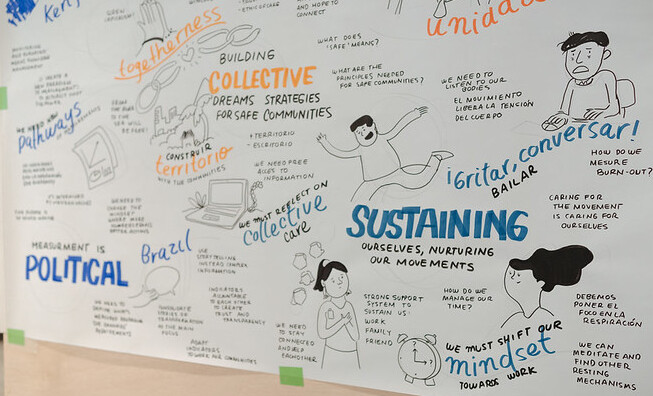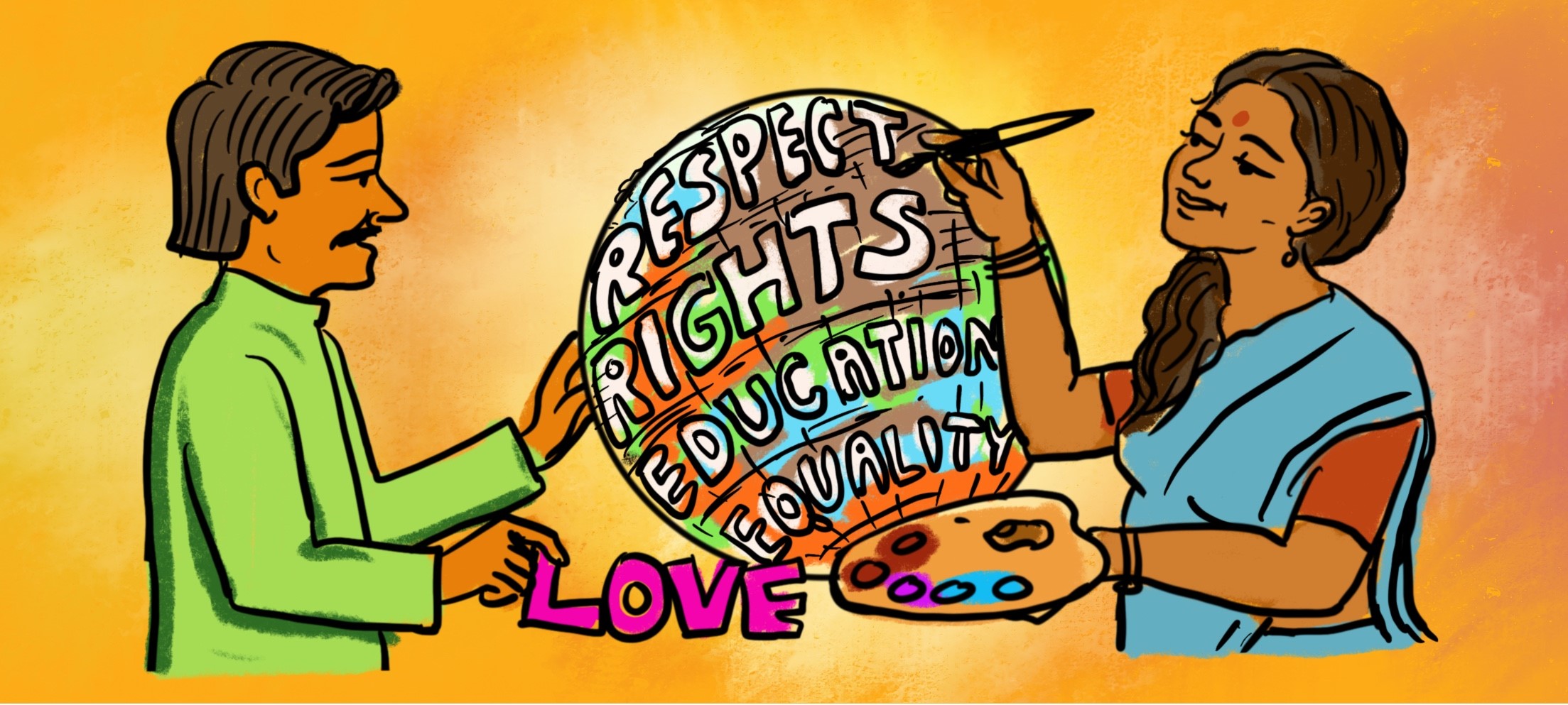For too long, the interaction between funders and grantees has been reduced to little more than a transactional exchange. Money flows one way, deliverables flow the other, and timelines are drawn with unyielding rigidity. This outdated model is increasingly being challenged. Community based organizations (CBOs) and South-based NGOs are pushing for a paradigm shift towards a more holistic approach — one that embraces non-monetary support and, crucially, flexible, unrestricted funding. (Some examples include #ShiftThePower and the RINGO Project). In this four-part blog, jointly authored by the people at Solidarity Foundation, we dive into insights from our study carried out in 2024, “Resourcing Social Movements: How Do We Shift the Power?” to tackle these complex issues.
In an era where civil society is increasingly under pressure, NGOs and CBOs find themselves at a critical juncture. The challenges they face are various: shrinking civic space, restrictive regulations, and an ever-competitive funding landscape. However, amidst these adversities, community foundations and International Non-Governmental Organizations (INGOs) have identified key areas where strategic interventions could secure a sustainable future for these vital social actors. The question is, will these efforts be enough to turn the tide, or is civil society fighting a losing battle?
Strategic planning: Clarity or chaos?
For NGOs and CBOs, having a strategic plan isn’t just a bureaucratic exercise – it’s a matter of survival. “The first thing is being clear about ‘who’ the organization is, how it’s structured, and why it is needed,” one funder emphasized. The message is clear: without a coherent roadmap, organizations are like ships without rudders, aimlessly drifting. A well-crafted institutional strategy not only helps organizations reassess their goals and create a pathway to success but it also makes them more attractive to funders. After all, who wants to invest in a venture without a clear vision? This lack of strategic clarity can lead to missed opportunities and diminished impact, making it crucial for funders to support the development of these essential frameworks.
Organizations also need time and space to reflect, renew themselves, and envision their future. This requires a shift in understanding among funders.
However, the reality is that many organizations are too caught up in day-to-day operations to step back and plan. Also, funders dismiss the need to support these processes. They call for robust, democratic organizations, but INGOs remain unwilling to acknowledge the financial and time commitment required.
MEL Framework and documentation: A necessary evil?
Monitoring, Evaluation and Learning (MEL) frameworks have long been a contentious topic in the NGO world. On one hand, they are seen as critical tools for measuring impact and driving improvements. On the other, they can be burdensome, diverting resources from the actual work. “Actually, I really do believe that we must report”, as an INGO representative asserted, “we must know what the impact of our work is.” However, how do you balance the need for accountability with the risk of drowning in paperwork? Especially if the data collected is not particularly useful and it tends to flow in only one direction – from the grassroots collectives upwards to NGOs, and then to funders. Rarely do communities get access to their own data, and individuals from whom the data is extracted are not involved in determining what data would be useful. Even though these systems help organizations understand what’s working and what’s not, the real question is: can these frameworks be designed in a way that doesn’t stifle innovation and responsiveness?
Building internal capacities: The invisible infrastructure
Many NGOs and CBOs often prioritize project delivery over strengthening their internal infrastructure. This is often due to limited time and resources, with tight deadlines and targets driving their focus, or because internal development is perceived as a luxury. However, as one grantee observed, “financial accounting, fundraising and reporting are challenges” for them. The reality is that without strong internal systems, organizations stand at a risk. This is where flexible funding becomes crucial. Unlike project-specific grants, core funding allows organizations to invest in essential internal capacities, such as financial management and human resources. This is a lifeline that could determine whether an organization thrives or merely survives. Despite its importance, securing such funding remains a significant challenge, particularly for smaller organizations.

In addition to flexible funding, grantees also emphasized the value of facilitated opportunities. One noted, “Our funder connected us with an organization that specialized in participatory methods, and that proved to be incredibly valuable.” The philanthropic community has the potential to step up and provide the resources needed to build this often-invisible infrastructure. It’s in their best interest to support the development of strong, resilient organizations. Organizations also need time and space to reflect, renew themselves, and envision their future. This requires a shift in understanding among funders. As one grantee put it, “Core funds allow you to envision your future more clearly and secure your present more effectively.” The freedom to allocate resources as needed can lead to more innovative and impactful solutions. However, with this freedom comes the responsibility of clear communication and transparency. There must be a process in place to facilitate ongoing dialogue between funders and grantees.
Simplifying processes: Cutting the red tape
The bureaucratic hoops that organizations must jump through to secure and maintain funding can be overwhelming. Recognizing this, some funders are making efforts to streamline application processes and reporting requirements. “We also try to shoulder some of the burden ourselves rather than passing all of them to our grantees”, an INGO leader noted. Another funder mentioned accepting report submissions in languages other than English, while another spoke of using short, reflective reports that encourage grantees to think critically rather than provide stock responses. By reducing unnecessary complexities, funders can make it easier for organizations to focus on their core missions. However, simplification must be done thoughtfully, ensuring that critical information is still captured. Striking the right balance between ease of process and accountability is not always easy, but it is crucial.
Opportunities for collaboration: A collective force
The notion that “donors don’t speak to themselves” highlights a significant inefficiency in the funding ecosystem. The lack of standardization in application procedures and reporting templates not only consumes valuable time but also diverts energy away from impactful work that NGOs and CBOs could be doing. By collaborating and harmonizing their requirements, funders can reduce redundancies and make it easier for NGOs and CBOs to navigate the funding landscape. Moreover, funders have much to learn from one another and could adopt more efficient and grantee-friendly practices. Additionally, philanthropic advocacy can be instrumental in shaping grantmaking practices and aligning funder priorities with the real needs of the communities they aim to serve. The question remains: will funders embrace this collaborative approach, or will the siloed status quo persist?
Building better relationships: Trust or bust
At the heart of any successful partnership lies trust. Yet, for many NGOs and CBOs, relationships with funders remain frustratingly transactional. Another CBO representative voiced this exasperation and pointed out, “often funders act as police officers, and we are painted as thieves.” The power imbalances in these relationships often lead to short-term project grants with little flexibility, jeopardizing the long-term sustainability of organizations. Building trust requires honest, open and transparent conversations that move beyond compliance to genuine respect. It calls for a shift in power and encouraging the philanthropic sector that is long entrenched in power dynamics, to move towards more equitable partnership models. The winds of change are blowing but they need to shake up the more established structures.
The path forward: A call to action
The future of civil society hinges on the actions we take today. By embracing strategic planning, flexible funding, simplified processes, re-imaging measurement approaches and authentic collaboration, we can strengthen the backbone of our NGOs and CBOs. This requires a concerted effort from all stakeholders – funders, grantees and the communities they work with. The challenges are immense, but so is the potential for transformative change. It’s time for the philanthropic community to move beyond mere support, to truly empower, trust and partner with civil society. Only then can we hope to build a more just, equitable and resilient future for all.
Follow the links below to read the other blogs in this series from the Solidarity Foundation.
Part 1: Did the pandemic prompt a rethinking of funder-grantee dynamics?
Part 2: From transaction to transformation: A possible path for funder-grantee relationships.
Part 3: Drowning in bureaucracy: Paperwork that kills the revolution,

